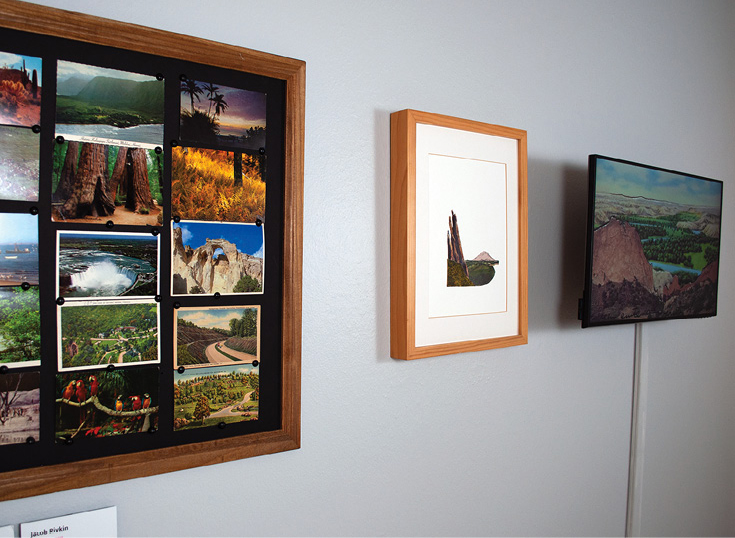The film flats and wagons collages together a postcard collection from 1930-1970 into a stop-motion animation. Borrowing from the vocabulary for moving set pieces in a theater production, the title alludes to backdrops seamlessly weaving in and out of a scene. In the film, postcards are cut along compositional elements like a mountain’s ridgeline or an ocean’s horizon line, and recombined through animation to create new and unrealized cinematic landscapes.
The blending of nostalgic landmarks & utopian vistas plays with our expectations for how we remember, and long for, a return to the natural world housed in our collective memory.
In recent projects, I’ve investigated historical images of the Schuylkill River in Philadelphia or animated a series of interviews about classical musicians during the Cultural Revolution in China. This synthesis of related and interconnected information through animation allows for new and unexpected perspectives to emerge. The role of the material is to allow for an element of the world to find its way into a (mostly) digital process. The material, like postcards or even drawn pencil lines on textured paper, allows for the viewer to have a tactile connection to the artwork. This physical embedded memory has the potential for the viewer to reflexively see themselves in the artwork, and by proxy open up the possibility of wonder and appreciation.
Animation hones in on a human desire for movement and life. The accumulation of interconnected images in sequence, layered with audio, presented by an artist as a glimmer of truth about the world makes space for an audience to empathize with a narrative, materials, and gestures that they might not have previously considered.




